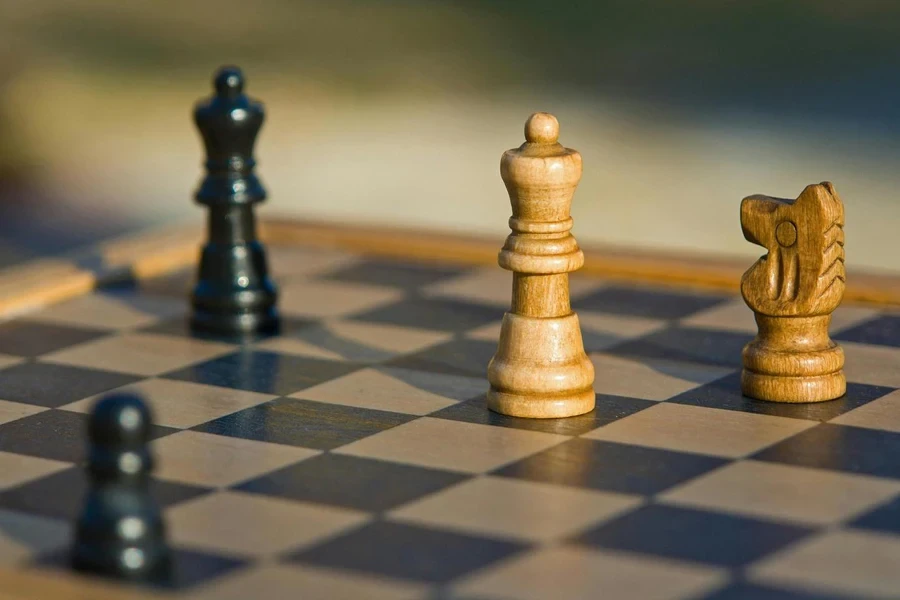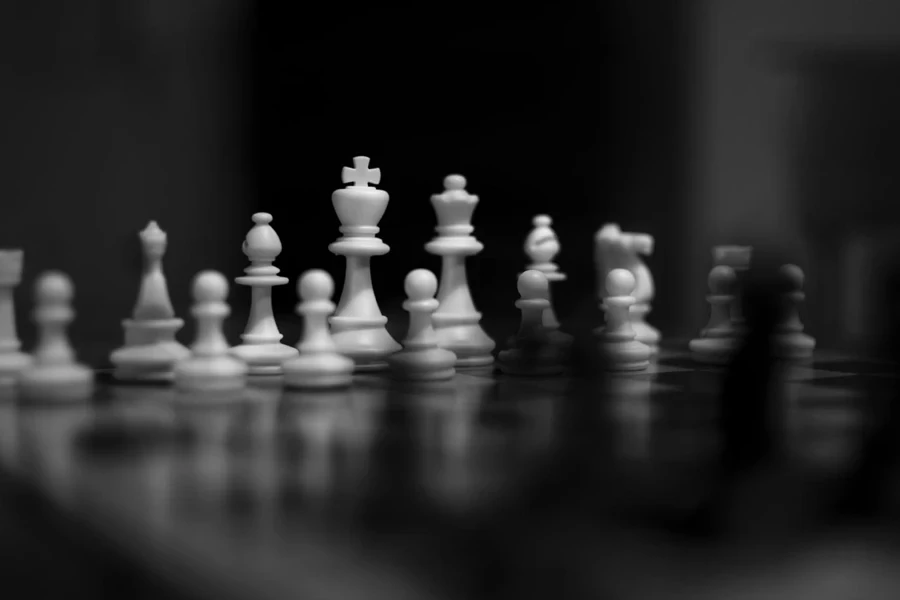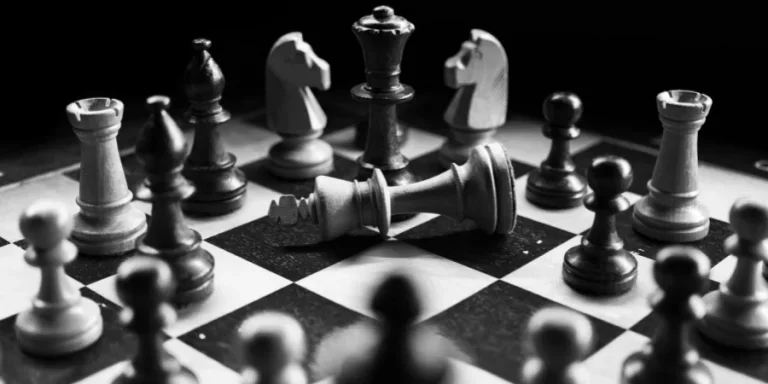Table of Contents
● Introduction
● Market overview
● Different types and their features
● Key considerations for selecting chess products
● Conclusion
Introduction

Chess has seen an increase in interest which has led to a noticeable growth in the market. There are plenty of choices for dedicated players and casual fans to explore. It is essential to grasp the kinds of chess sets available and their distinct characteristics to make informed selections that guarantee an enjoyable and immersive gaming experience.
Market overview

Market scale and growth
The worldwide chess industry has seen growth and is anticipated to grow steadily. As of 2023, the market was valued at USD 2.3 billion and is projected to hit USD 3 Billion by 2032, with a CAGR of 34% from 2024 to 2032. Thanks to the surge in online chess platforms and a growing enthusiasm for chess for leisure and learning purposes.
Regional insights
The chess market analysis findings show that North America is at the forefront, followed closely by Europe and the Asia Pacific regions. North America was leading in market share in 2023, while Europe is predicted to experience growth, especially in nations like Germany and the UK. The Asia Pacific region is projected to have a rapid compound annual growth rate (CAGR) of 5%, driven by growing interest in chess among millennials and Gen Z and the increasing number of board game cafes and bars in countries like China and India.
Driving trends
The market for chess is growing due to the increasing inclusion of chess in programs and the rise of online platforms dedicated to the game. Also, the growth in global chess tournaments and events worldwide, along with the influence of modern technologies like AI-based learning, have greatly contributed to making chess more popular and accessible to a wider audience. As a result, there is now a huge following of fans and competitive players in the chess community.
Different types and their features

Wooden chess boards
Wood chess boards are highly respected for their classic charm. They are skillfully made from various hardwoods that each bring their own special qualities.:
Walnut
Walnut is famous for its beautiful hue and smooth texture, making it robust and resilient against wear and tear. These qualities have led to its widespread use in creating top-quality chess boards.
Maple
Maple is usually chosen for the squares due to its smooth texture and light hue, which creates a striking contrast with darker wood options.
Rosewood
Rosewood is a type of wood known for its reddish-brown hue and durability. It is often used in furniture making and woodworking for its aesthetic qualities.
Ebony
Ebony is commonly chosen for darker squares because of its black color, which creates a striking difference from lighter woods. It is appreciated for its sleek texture and durability in the long run.
Sandalwood
Renowned for its aroma and solid feel, sandalwood brings a distinctive sensory touch to chess, often combined with lighter woods such as maple or boxwood.
Glass and marble chess boards
Marble and glass boards offer a blend of beauty and practicality.
Glass
Usually constructed from tempered glass, these boards commonly showcase frosted or etched patterns to distinguish the squares for durability and a contemporary appearance.
Marble
Marble chess boards are made from stone such as Carrara marble and granite or even materials like the elegant and mesmerizing Onyx stone, ensuring durability and a touch of uniqueness to each set due to the inherent differences in the stone’s patterns and shades. The maintenance requires touch and regular care to avoid staining or harm to the exquisite board.
Electronic and digital chess boards
Electronic and digital chess boards provide functionalities for practice and competitive gaming.
Integrated sensors
These boards come with pressure or optical sensors that pick up movements of the pieces and send that data to devices, enabling automatic game recording and analysis of moves.
Connectivity
Numerous electronic boards can link to computers or mobile devices using Bluetooth or USB connections for gaming competitions and accessing tutorials and analytical tools.
LED indicators
There are electronic boards that incorporate LED lights to show movements or errors and indicate the game status to improve user interaction and enhance training sessions.
Power sources
These boards usually run on batteries or plugged-in power outlets to maintain reliable performance for long gaming sessions.
Travel and compact chess sets
Compact chess sets are created with portability in mind. Offer specialized features for ease of use during travel:
Magnetic pieces
To avoid them from falling during journeys, some sets come with bases that stick to the surface to keep the pieces in place on the board while traveling.
Folding boards
These boards are usually folded in half and have compartments to keep the pieces safe and organized, making them convenient to carry around or store easily.
Lightweight materials
Travel kits are typically crafted from lightweight materials, such as plastic or thin wood veneers, to ensure easy portability without compromising strength and sturdiness.
Compact size
These collections are more compact in size. Perfect for enjoying in limited areas, like airplanes or cars.
Key considerations for selecting chess products

Material and durability
The quality of the materials used in chess sets plays a role in their longevity and the level of enjoyment they provide players. Fine quality chess boards are typically crafted from hardwoods such as walnut or rosewood, known for their durability and aesthetic appeal. Walnut is favored for its brown color and intricate grain patterns that help maintain its resistance to wear and tear over time. Rosewood is also highly sought after for its reddish-brown tones and solid grain structure that adds a touch of luxury to the playing experience. Maple wood is often chosen for its tone and smooth feel when creating chessboards and lighter squares because it contrasts nicely with darker woods such as ebony, which are sturdy and resistant to warping naturally. These wood choices add visual interest and guarantee that the chess set will hold up well to frequent use over the years. For those looking for affordable and practical alternatives, plastic and vinyl boards are recommended, as they are durable, moisture-resistant materials that can withstand frequent handling and transport.
Design and aesthetics
Chess set designs impact their functionality and look. The Staunton design is favored for its layout, which enhances playability and visual appeal. Luxury chess sets are admired for their superior craftsmanship and premium materials, such as intricately carved pieces crafted from rare woods or valuable metals. That adds elegance and artistic charm to the game. Themed chess sets offer designs that serve as both playable game pieces and decorative accents simultaneously. They showcase shapes and styles that push players to adjust to these distinct forms and add a layer of thrill and challenge to the gaming journey.
Purpose and usage
Choosing the chess set depends a lot on what you plan to use it for. A sturdy set of materials like plastic or simple hardwoods works well for casual games or newbies. They are cost-effective and long-lasting. On the other hand, tournament players look for sets that meet FIDE standards. These rules specify sizes and shapes for pieces and boards. For instance, the height and base width of the king are measurements to ensure that the pieces are clear and match well with the board’s squares. Display sets are usually designed with a focus on looking attractive by using high-quality materials and detailed patterns. It may come with boards with fancy decorations or stands that make them suitable for display in houses or workplaces. Travel sets are more focused on being easy to carry around and typically come with folding boards and pieces that use magnets to avoid shifting during transportation to make playing on the move convenient and practical.
Budget and value
When choosing a chess set that gives you the bang for your buck, it’s crucial to weigh the costs against the benefits. For novice players or those who play casually, options like plastic sets or common woods such as birch and Sheesham are a practical choice. These materials are sturdy. Provide a decent gaming experience without breaking the bank. In the price range, sets made from premium woods like oak or walnut offer better aesthetics and durability at a reasonable cost. Luxury chess sets from top-quality materials like ebony and marble may be more expensive. Offer excellent durability and craftsmanship that are worth it for dedicated players and collectors alike. These sets often include hand-carved pieces and special design features that add charm and value.
Conclusion

Knowing the trends in the market and the different types of chess products available is essential for making smart choices when buying chess equipment. The chess industry is expanding rapidly, offering a variety of options, from classic wooden boards to high-tech electronic sets. The quality of materials used, design preferences, intended use, and budget play roles in deciding which products to choose. By examining these factors, companies can purchase top-notch chess items that cater to their requirements and elevate the gaming experience for their clientele.




